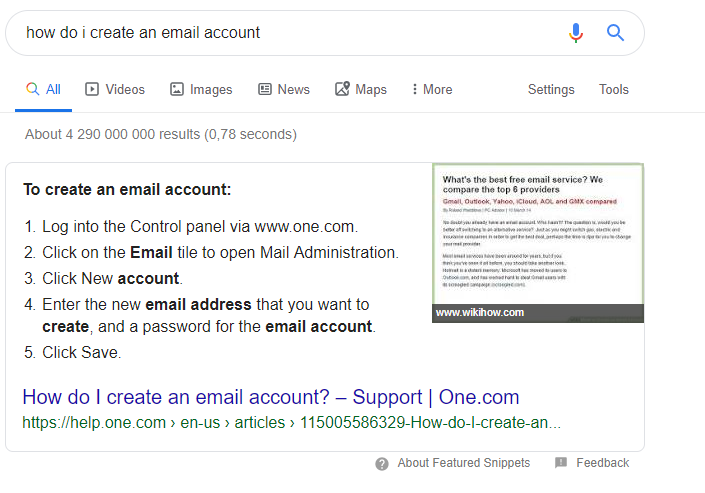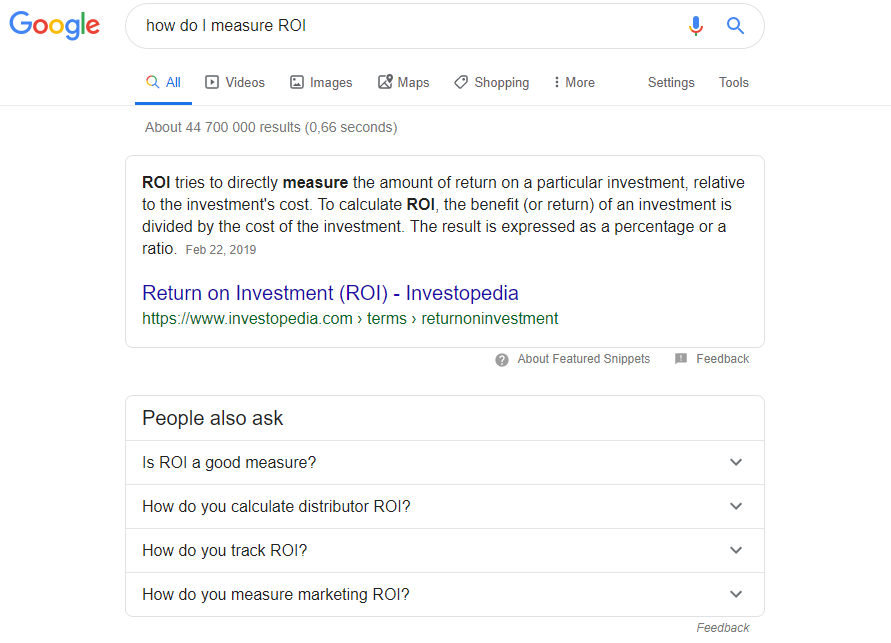Google’s algorithms are forever changing, like how the Fred update destroyed so many rankings. If there’s one thing that remains constant, it’s that all updates are geared toward providing searchers with a better experience. To help searchers find answers to their questions even faster, featured snippets have now become a prominent feature in search results.
This is a hot piece of search results real estate and one that you can optimize your content for.
Featured snippets 101
The what
Featured snippets can show up in a number of different ways depending on the information the user is searching for.
The three main formats are paragraph snippets that highlight the answer to the user’s question and list or numbered snippets that offer step-by-step instructions.

Some of the other formats include:
- Table snippets. As the name suggests, a table is displayed as the featured snippet
- People also ask. Further down on page one of Google’s search results, there is usually a section called ‘People Also Ask’, which are also featured snippets
- Tools. Tools such as currency converters, weather, and sports scores can also appear as featured snippets
- Carousels. This is generally several cards that appear in a carousel format. This type of snippet tends to appear when a user searches for a particular object
- News stories. Searching for a trending news story will usually bring up a list of accredited news sources
- Knowledge cards. This is the panel that appears on the right-hand side of Google’s search results and it usually contains information on a business, a famous figure, or a location
The when
Featured snippets tend to show up in search results under the following circumstances:
- For queries that include a question. Words such as who, what, when, and where will usually generate a featured snippet
- For terms that generate high volumes of traffic
- Search terms with high levels of related questions, which are displayed as ‘People also ask’ results
- For queries relating to products, comparisons, or reviews. Words such as best will usually generate a featured snippet
The why
Here are just a few of the main reasons why brands should care about optimizing for featured snippets:
- Voice search will soon become the norm for those searching on a mobile device and the majority of voice searches are related to questions, which means featured snippets will continue to dominate search results
- The way that online users search is changing and brands that fail to adapt and cater to these requirements will potentially fall behind
- Featured snippets offer more opportunities to optimize for long-tail keywords
Recommended Read: Building a Prominent Appearance in the Google Local 3-Pack
Optimizing for featured snippets
Here are a few tips and guidelines that will help increase the chances of your site or content appearing as a featured snippet.
1. Think like your audience
The best way to start optimizing your content for featured snippets is to think like one of your customers. What are the types of questions they would want to find answers for that are relevant to your business? Google is one of the best tools to start brainstorming search queries and keywords.
Type a query into Google to see what snippets are currently showing up. From there, find ways to optimize your content, so that your site is offering a better, more valuable answer. The ‘People also ask’ section can provide you with additional content ideas.

Answer the Public is also an excellent tool for this, as is SEMRush.
2. Highlight questions and answers in your content
In order for your content to show up as a paragraph snippet, it helps to highlight the question and the answer that you’re trying to rank for. You can do this by including a full question or part of the search query in an H2 subheading and providing an answer directly beneath the header. It also helps to make the answer succinct but valuable. According to SEMRush, featured snippets are usually between 40-50 words.
3. Answer multiple questions
Research shows that websites that earn a featured snippet are far more likely to earn more for additional queries in the future. To increase your chances of showing up for more snippets, aim to create articles that answer multiple questions. One lengthy and valuable article has more weight than multiple, shorter articles. Naturally, this type of article can only be created if it makes sense to do so.
4. Structure content correctly
The easier it is for Google to pick up on the most important information in your articles, the higher the chances it will become a featured snippet. For example, a table or list that has the relevant HTML tags can easily be read by Google (<table>, <ol>, and <ul>). The same applies to headers – use the correct header tags in the correct order for the best results.
5. Use high-quality media
While most featured snippets do include an image, this does not guarantee that Google will actually use the article’s image. To ensure that your content creates the best first impression, only use high-quality images in your articles. Adding videos to your articles is another way that you can increase the chances of it showing up as a featured snippet – provided it answers a relevant query that is.
6. Add a how-to section to the site
If it makes sense to do so, adding a how-to section to your site will increase the chances of your content being featured at the top of Google’s search results. If your customers usually ask the same questions again and again, adding a how-to section will offer additional value and help your SEO efforts.
In closing
It’s not always easy to try and keep up with Google, but based on how search is changing, featured snippets are going to be around for some time. Earning a featured snippet means your site will appear in the highest possible spot without you having to pay for advertising, which is why it’s recommended that brands start optimizing their content accordingly.

